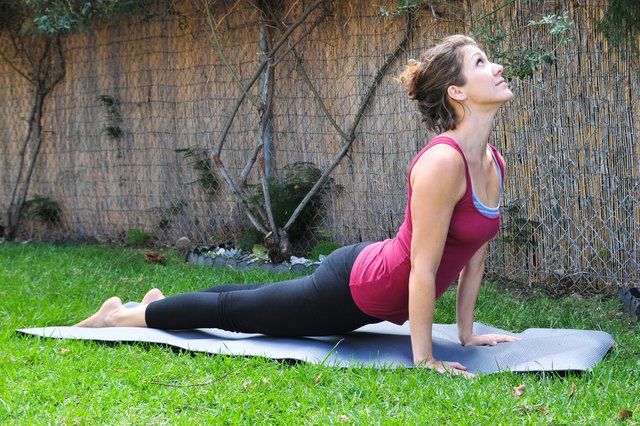
When you practice Hatha yoga you have choices. The sheer number of poses and their variations and modifications gives you the freedom to enjoy any practice that speaks to you on any given day. If one day you feel like doing back bends exclusively, and balancing poses the next, you can make that decision based on how you feel or what you want to achieve. That being said, a well-rounded one-hour Hatha yoga practice consists of certain types of poses that work in concert to improve your well-being. Your choice.

One hour can whiz by very quickly when you’re occupied doing something worthwhile. Make the most of your 60 minutes by anticipating in advance what you’d like to experience on your yoga mat. If you enjoy the idea of practicing a variety of poses but also notice that some areas need more work than others, then apportion your time accordingly. Save 20 to 30 minutes for poses that address issues such as aching shoulders, a weak core or tight hamstrings. You can be as creative or traditional, as playful or precise as you like. If you need inspiration, check out YogaJournal.com under “Poses,” where you can even use a tool to build a Hatha sequence.

Standing Hatha yoga poses were designed to strengthen your muscles and improve your focus and balance. Whether you choose to ground yourself in Mountain pose, balance on one foot in Tree or display some attitude in the Warrior series, standing poses are where you should start your Hatha practice. It’s during the practice of standing poses where you’ll learn to make the adjustments that will bring your body into alignment and correct your posture. Among the very best and useful standing poses you might consider in addition to the ones already mentioned are: Chair, Triangle, Standing Forward Bend, Eagle, Downward Dog and Extended Side Angle.

No practice would be complete without seated poses that include twists, forward bends and poses that strengthen your abs. You can work your way up over time to the full expression of a seated pose that might be a bit beyond your current level of expertise or stretch-ability. Before Lotus pose, you can practice stretching your inner thighs and preparing your knees with poses like Cobbler, Easy, Fire Log and Cow Face poses. Likewise, before Full Boat pose, practice Half Boat until your abdominal muscles are strong enough to maintain the full version. Seek tranquility with Staff, Head-to-Knee and Seated Forward Bend; and unwind with twisting postures like Bharadvajasana I.

Back bends are useful poses in reducing tension and stress in your shoulders and back. They’re also what are called chest-openers. If you tend to sit or stand slumped forward, then make back bends a part of your regular Hatha practice. Perform Locust, Upward Dog, Bow, Cobra, Sphinx, Bridge and Camel. Pay particular attention to lengthening your spine by tilting your tailbone toward your pubic bones in order to avoid compression of your lower back.

Unless you have been instructed in the correct execution of arm balances and inversions by a qualified Hatha yoga teacher, don’t try these poses on your own. You need sufficient wrist, arm, shoulder and core strength to hoist yourself into these poses, and one wrong move could set you up for an injury.
Original article and pictures take www.livestrong.com site
Комментариев нет:
Отправить комментарий